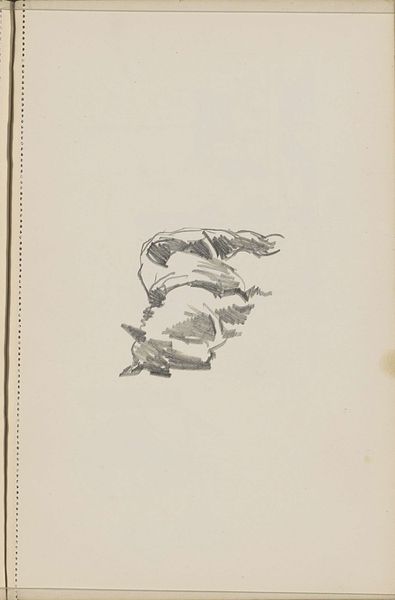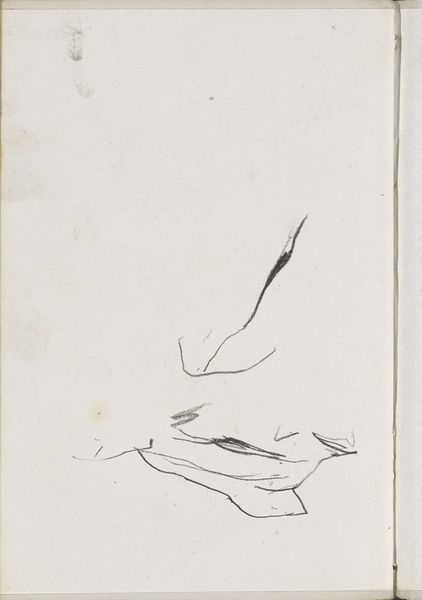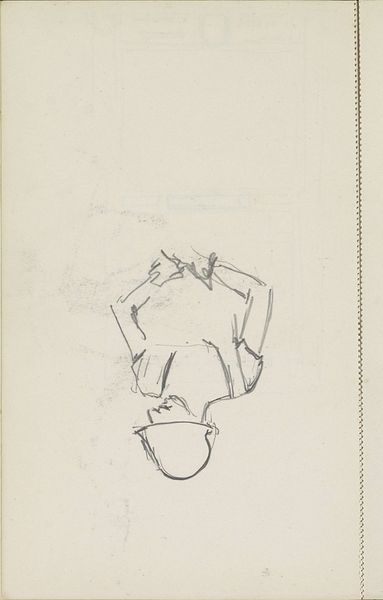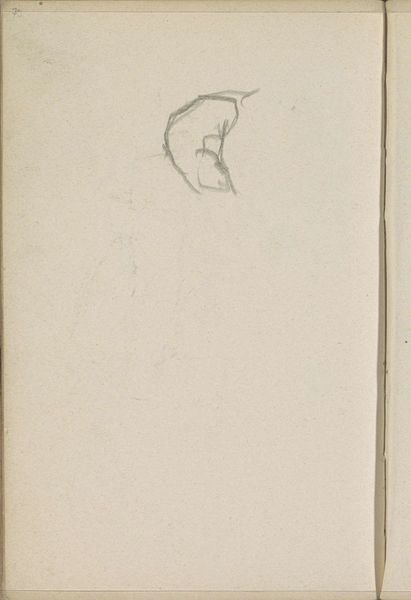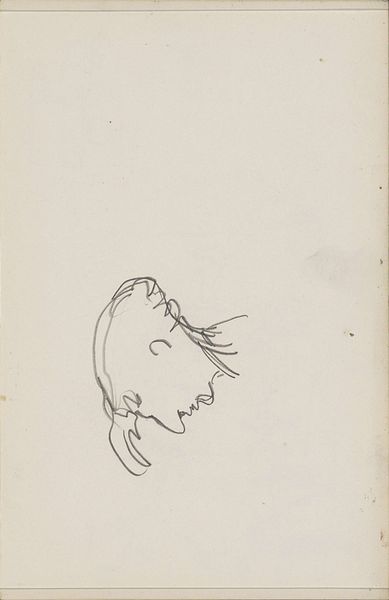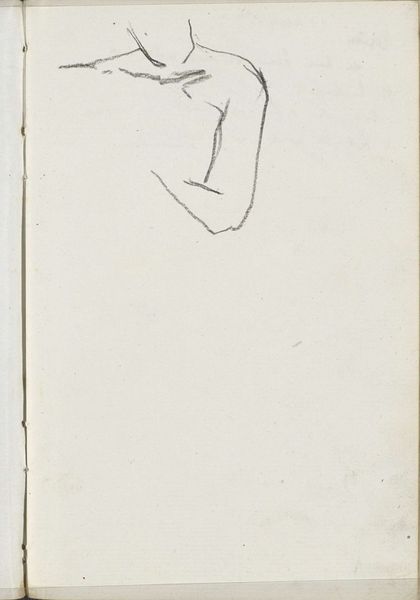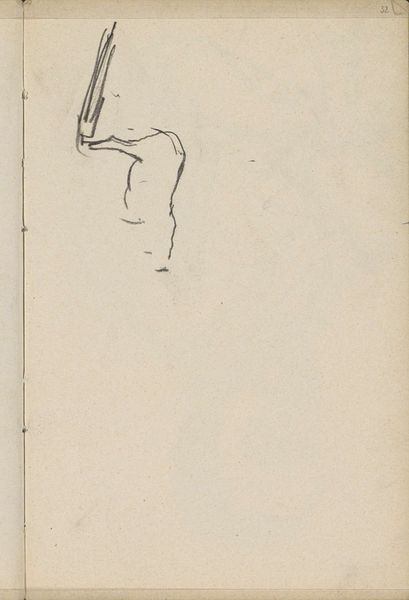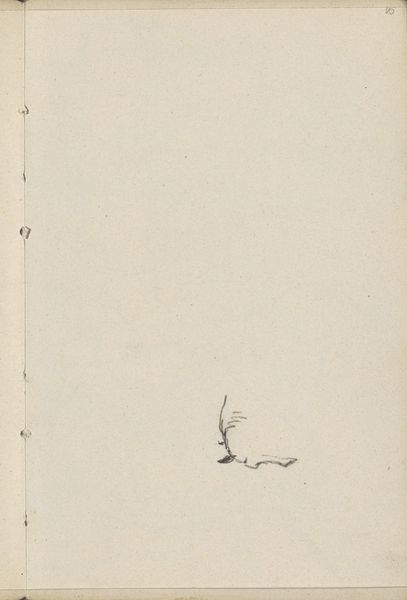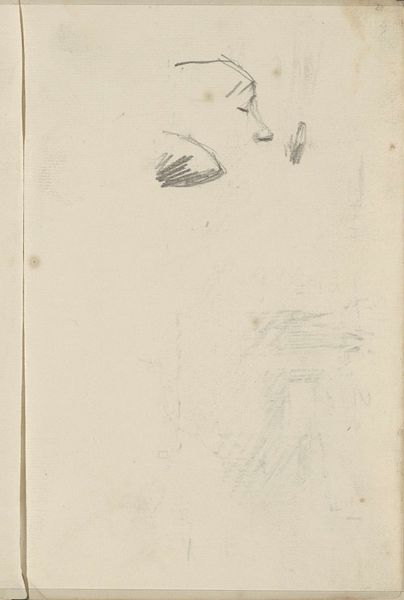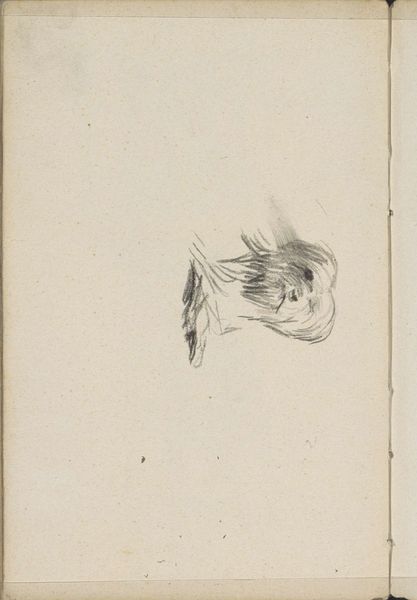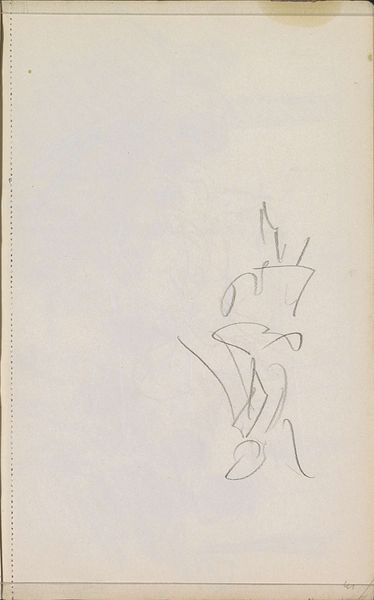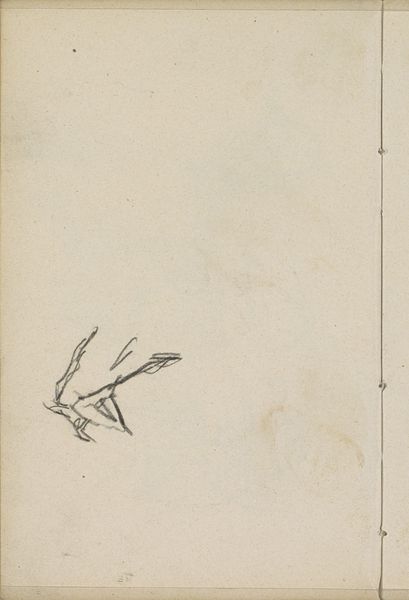
drawing, paper, pencil, graphite
#
pencil drawn
#
drawing
#
amateur sketch
#
light pencil work
#
pencil sketch
#
incomplete sketchy
#
paper
#
form
#
personal sketchbook
#
ink drawing experimentation
#
pen-ink sketch
#
pencil
#
line
#
graphite
#
sketchbook drawing
#
pencil work
Copyright: Rijks Museum: Open Domain
Curator: Well, here we have a fascinating study rendered in pencil, attributed to Cornelis Vreedenburgh and thought to have been created sometime between 1890 and 1946. Editor: It has a strangely isolated feel to it, almost minimalist. A small, dark cluster of lines adrift on a very large, pale field. There's a pronounced imbalance. Curator: Indeed. Consider the starkness of the composition, though. Vreedenburgh presents us with an almost abstract interplay of form. The delicate hatching creates a compelling contrast against the paper's void. Editor: True, but context is critical. Without knowing the exact year it was produced within that rather broad range, it’s challenging to fully understand what Vreedenburgh might have been grappling with socially and artistically. It looks almost like a doodle, doesn't it? Was it a preparatory sketch or a finished, independent work? The intention shapes our interpretation significantly. Curator: Its formal incompleteness begs the question, doesn’t it? What is the artist attempting to represent here? A suggestion of shape and volume only gestured to with a minimal of markings. The line work itself becomes the object of study, its delicate variation revealing so much of the artist's process. Editor: But to whom was this "study" intended for? Vreedenburgh wasn't exactly a household name. How might the evolving marketplace, the accessibility of artistic training, the prevailing attitudes of museums towards unfinished work at the turn of the century play into the understanding of a sketch like this? The sketch is held within a notebook page - we lose the wider visual narrative when displayed alone. Curator: I submit that the lack of contextual information enables us to engage more fully with its formal elements! Stripped bare, we are forced to look intently at the qualities of line, tone, and their combined effect, free from predetermined narratives. The beauty resides in its ambiguity. Editor: And the meaning lies within the historical discourse framing it, wouldn't you say? Regardless, the suggestive nature of the form certainly draws me in. It makes me want to understand not only the work of Vreedenburgh but the culture from which it emerged. Curator: I am taken, instead, by its purity of expression and the efficiency with which Vreedenburgh has captured his fleeting observation. Editor: Both are important facets, truly!
Comments
No comments
Be the first to comment and join the conversation on the ultimate creative platform.
